Related Research Articles

The Citadel of Cairo or Citadel of Saladin is a medieval Islamic-era fortification in Cairo, Egypt, built by Salah ad-Din (Saladin) and further developed by subsequent Egyptian rulers. It was the seat of government in Egypt and the residence of its rulers for nearly 700 years from the 13th century until the construction of Abdeen Palace in the 19th century. Its location on a promontory of the Mokattam hills near the center of Cairo commands a strategic position overlooking the city and dominating its skyline. When it was constructed it was among the most impressive and ambitious military fortification projects of its time. It is now a preserved historic site, including mosques and museums.
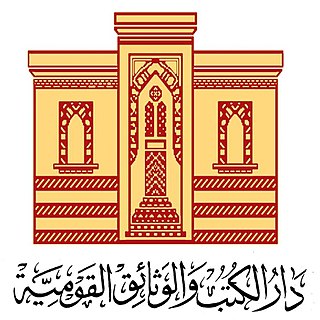
The Egyptian National Library and Archives is located in Nile Corniche, Cairo and is the largest library in Egypt, followed by Al-Azhar University and the Bibliotheca Alexandrina. The Egyptian National Library and Archives are a non-profit government organization.

The Gayer-Anderson Museum is an art museum located in Cairo, Egypt. It is situated adjacent to the Mosque of Ahmad ibn Tulun in the Sayyida Zeinab neighborhood. The building takes its name from Major Robert Grenville Gayer-Anderson Pasha, who resided in the house between 1935 and 1942 with special permission from the Egyptian Government. The museum is noted for being one of examples of 17th-century domestic architecture left in Cairo, and also for its collection of furniture, carpets, curio, and other objects.

Hadaek al-Qubbah is a district in the Northern Area of Cairo, Egypt.

Zeitoun, also al-Zeitoun, is one of the eight districts that make up the Northern Area in Cairo, Egypt. It has been made famous for its Marian apparitions at the Coptic Church of the Virgin Mary of Zeitoun during the years 1968–1971.

El Sakkakini is a small district (quarter) in Cairo, Egypt that neighbours the El Zaher and Abbaseya districts.

Al-Wayli is a district in the Western Area of Cairo, Egypt. According to the district map (below), and the census, it is subdivided into the qisms of al-Wayli and el-Daher, or al-Zahir. Some of their better known quarters are Sakakini and Abbassia.

Zamalek is a qism (ward) within the West District in the Western Area of Cairo, Egypt. It is an affluent district on a man-made island which geologically is part of the west bank of the Nile River, with the bahr al-a'ma cut during the second half of the 19th Century to separate it from the west bank proper. The northern third has been developed into a residential area, which was home to 14,946 people during the 2017 census. The southern two thirds are mostly sports grounds and public gardens, a stark green reserve in the middle of Cairo.
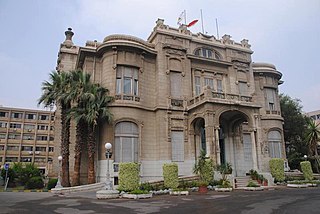
The Saffron Palace is located in the Egyptian capital of Cairo, near Abbassia at Khalifa Maʽmon Road. Now it is inside the main campus of the Ain Shams University.
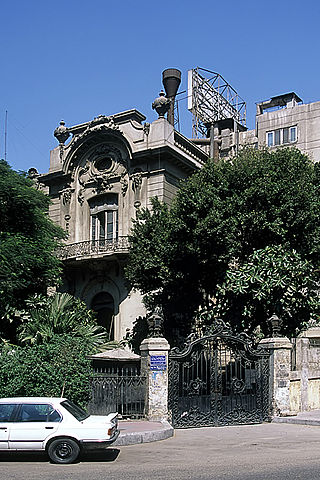
The Dubara Palace is located at the Simon Bolivar square in the north part of the Garden City district in downtown Cairo, Egypt. It is used for an evangelical church school. It is known as Villa Casdagli or Kasr EL-Dobara Experimental Language School, too.

Al-Gawhara Palace, also known as Bijou Palace, is a palace and museum in Cairo, Egypt. The palace is situated south of the Mosque of Muhammad Ali in the Cairo Citadel. It was commissioned by Muhammad Ali Pasha in 1814.

Khairy Pasha Palace is a neo-Mameluk building and former palace of Khairy Pasha, located on 113 Qasr El Eyni Street, in Tahrir Square, Cairo. It served as the American University in Cairo's Tahrir Square campus since 1920 until 2008 when the new campus was inaugurated in New Cairo. The building in the photograph on the right was originally the Girls' School of the Greek Community of Cairo. In 1964 it was sold to the AUC and served as the Greek Campus.

Al-Muizz li-Din Allah al-Fatimi Street, or al-Muizz Street for short, is a major north-to-south street in the walled city of historic Cairo, Egypt. It is one of Cairo's oldest streets as it dates back to the foundation of the city by the Fatimid dynasty in the 10th century, under their fourth caliph, Al-Mu'izz li-Din Allah . Historically, it was the most important artery of the city and was often referred to as the Qasaba. It constituted the main axis of the city's economic zones where its souqs (markets) were concentrated. The street's prestige also attracted the construction of many monumental religious and charitable buildings commissioned by Egypt's rulers and elites, making it a dense repository of historic Islamic architecture in Cairo. This is especially evident in the Bayn al-Qasrayn area, which is lined with some of the most important monuments of Islamic Cairo.
The Musafir Khana Palace also known as the Musafirkana Palace was built in Cairo, Egypt between 1779 and 1788 by Mahmud Muharram; a wealthy merchant. Muhammad Ali Pasha bought the palace in early 19th century to use as a royal guesthouse. It was the birthplace of his grandson Khedive Ismai'l 1830-1895. In 1998, it burned to the ground. It was an excellent example of the Ottoman Style.
The Amir Taz Palace is a palace in Cairo, Egypt. It is at the intersection of Saliba Street and Suyufiyya Street.

El Manial is a district of Cairo, located on Rhoda Island in the Nile.
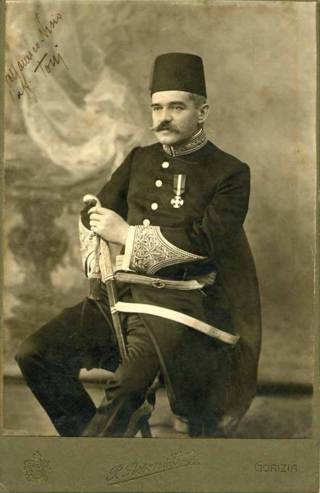
Antonio Lasciac (Italian) or Anton Laščak (Slovene) was an architect, engineer, poet and musician of Slovene descent, who designed the Khedive's Palace in Istanbul and the Tahra Palace in Cairo.
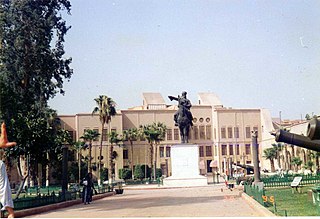
The Egyptian National Military Museum is the official museum of the Egyptian Army.
References
- 1 2 Thomas Meyer-Wieser (2023). Architectural Guide Cairo. DOM publishers. p. 288. ISBN 978-3-86922-813-6. Wikidata Q125658979.
- 1 2 3 4 Raafat, Samir (10 June 1999). "TAHER PASHA OF TAHRA PALACE". Cairo Times. Cairo, Egypt: 1. Archived from the original on 4 October 2009.
30°05′54″N31°18′31″E / 30.098235°N 31.308509°E